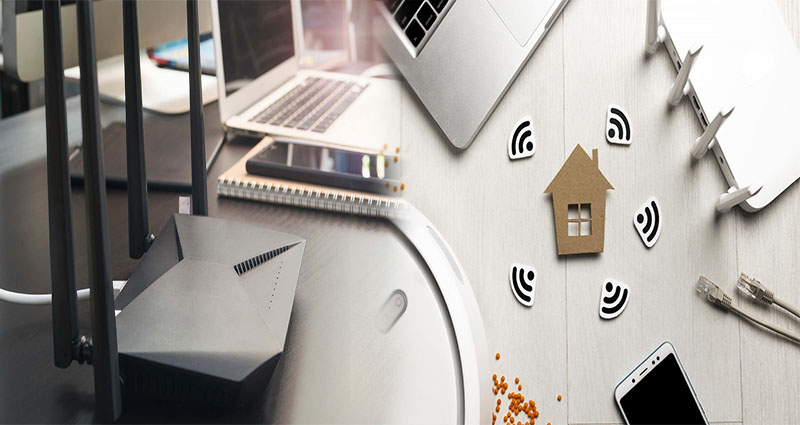In today’s digital age, where large files, high-definition media, and data-intensive applications are the norm, having a high-performance network-attached storage (NAS) device is essential. Whether you’re a creative professional, a media enthusiast, or simply someone who values fast and reliable data transfers, leveraging Gigabit Ethernet and RAID support in your NAS can supercharge your home network. Let’s explore the benefits and capabilities of these features and how they contribute to lightning-fast data transfers.
Understanding Gigabit Ethernet
Gigabit Ethernet is a networking technology that enables data transfer speeds of up to 1 gigabit per second (Gbps). By providing significantly higher bandwidth than standard Ethernet connections, Gigabit Ethernet can handle the transmission of large files and high volumes of data with ease. Here’s why Gigabit Ethernet is a game-changer for your NAS:
Blazing-Fast Data Transfers
With Gigabit Ethernet, you can experience lightning-fast data transfers within your home network. Whether you’re streaming media, transferring files between devices, or accessing data remotely, the Gigabit Ethernet connection ensures minimal latency, allowing for quick and efficient data transmission.
Seamless Streaming and Multi-User Access
Gigabit Ethernet is particularly beneficial for streaming high-definition media. It provides the necessary bandwidth to support multiple concurrent streams without buffering or loss of quality. With a gigabit connection, your NAS can effortlessly handle media playback on various devices throughout your home network, ensuring a seamless entertainment experience for everyone.
Enhanced Network Performance
Gigabit Ethernet significantly improves the overall network performance in your home. It reduces network congestion and latency, making your network more responsive and efficient. This is particularly beneficial for activities such as online gaming, video conferencing, and cloud backups, where a stable and high-speed connection is essential.
Harnessing the Power of RAID
RAID (Redundant Array of Independent Disks) is a technology that combines multiple physical hard drives into a single logical unit. By configuring your NAS with RAID support, you gain several advantages for fast and secure data transfers:
Increased Data Redundancy and Protection
RAID configurations like RAID 1 (mirroring) or RAID 5 (striping with parity) provide data redundancy. In the event of a hard drive failure, your data remains intact, and your system continues to operate without interruption. RAID protects your data and ensures that it can be recovered easily, reducing the risk of any potential data loss.
Improved Read and Write Performance
Certain RAID configurations, such as RAID 0 (striping without redundancy), improve read and write performance by distributing data across multiple drives. This parallelization of data access allows for faster data transfer speeds, making your NAS more efficient in handling large files or concurrent transfers.
Scalability and Capacity Expansion
RAID supports the expansion of storage capacity without losing data or interrupting normal NAS operations. By adding additional hard drives to your RAID configuration, you can increase the overall storage capacity of your NAS, ensuring that you have ample space for your growing data needs.
Choosing the Right High-Performance NAS
When shopping for a high-performance NAS for your home network, consider these factors:
Hardware Specifications
Look for NAS devices that come equipped with Gigabit Ethernet ports to ensure maximum data transfer speed. Additionally, check for RAID support, ideally with multiple RAID configurations available, to give you versatility and redundancy options.
Processor Power and RAM
To handle fast data transfers efficiently, consider NAS units with powerful processors and ample RAM. These specifications contribute to the overall performance and responsiveness of your NAS, especially when dealing with multiple users and data-intensive tasks.
Expandability and Future-Proofing
Select a NAS that provides expansion options, such as additional drive bays or compatibility with external storage devices. This allows you to increase your storage capacity as your needs grow without having to invest in an entirely new NAS.
By harnessing the power of Gigabit Ethernet and RAID support, you can unlock the full potential of your high-performance NAS and achieve lightning-fast data transfers within your home network. Gigabit Ethernet ensures you have the bandwidth to handle large files, seamless streaming, and multiple concurrent connections. RAID support offers data redundancy, improved performance, and scalability, protecting your data while providing ample storage. When choosing a high-performance NAS, consider the hardware specifications, processor power, RAM, and expandability to suit your specific needs. Embrace the speed and security provided by Gigabit Ethernet and RAID support, and enjoy the benefits of a high-performance NAS that supercharges your home network.











